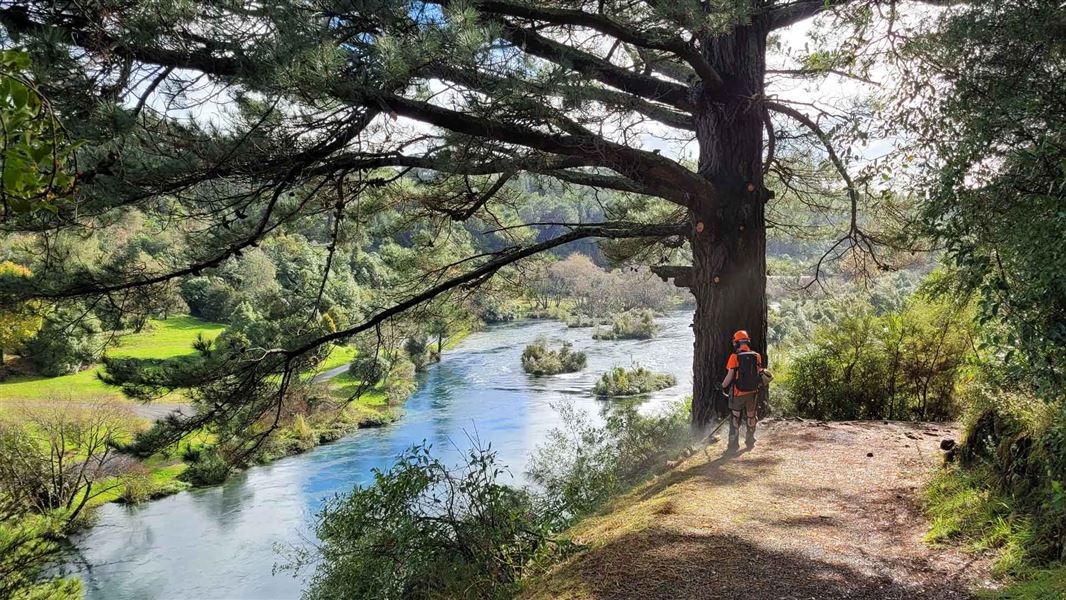Archived content: This media release was accurate on the date of publication.
Date: 03 July 2023
Extreme weather events earlier this year caused widespread damage to conservation areas, tracks, campgrounds and huts, heritage sites and native species and habitats. Northland, Auckland, Coromandel, and Hawke’s Bay were most severely affected.
DOC Director of Cyclone Recovery Dan Heinrich says staff have checked, cleaned-up and reopened about 80% of roughly 500 visitor sites closed for safety due to the extreme weather.
This includes popular walks like Te Whara Track at Bream Head in Northland, Goat Island Walkway north of Auckland, Huka Falls track in Taupō, Hakarimata track in Waikato, and tracks in the Kauaeranga Valley in Hauraki.
“It’s been a massive task. Not all sites were damaged, but all required work to inspect them, clear slips, move fallen trees from tracks and do minor repairs to make them safe to reopen,” Dan Heinrich says.
“We’re continuing to work to clean up and repair damage at sites and replace lost infrastructure such as fences and trap networks to restore previous levels of protection for threatened native species and habitats.
“Our focus now is on the remaining closed visitor sites, a third of which have major damage, requiring more assessments, planning and complex work.
“The constant rain and continuing land movement means we’re facing some complex and dynamic challenges at some locations, which we’re working to resolve with geotechnical experts. The weather has also slowed repair work.”
With school holidays starting, we’re reminding people to avoid closed sites for their own safety, says Dan Heinrich. This includes sites such as Cathedral Cove, Cape Kidnappers/Te Kauwae-a-Māui and Te Henga Walkway, which are all closed.
“People need to take extra care if visiting conservation areas in cyclone-affected areas. Soils are saturated, land is still moving and rivers flooding more easily due to gravel build up. Be prepared to take extra time or turn back if needed.”
DOC will work with Treaty Partners, stakeholders, and local communities to consider options and develop plans for the most damaged sites. This may include temporary solutions for some sites to get them partially open to visitors while longer-term planning and repairs are carried out.
In some places it may not be possible to repair or rebuild in the same way and other options will need to be considered, says Dan Heinrich.
“We need to use the cyclone recovery as an opportunity to build in resilience to future climate change and work with others to achieve enduring solutions.”
Alongside work on visitor assets, DOC heritage experts have been assessing important cultural heritage site for damage. Initial results suggest most damage is minor, but this work is ongoing.
DOC biodiversity teams have also been assessing cyclone impacts and found about 160 native species and habitats have been adversely affected. Work is underway to evaluate the next steps for recovery.
Check the DOC website for the latest alerts and closures.
Contact
For media enquiries contact:
Email: media@doc.govt.nz
